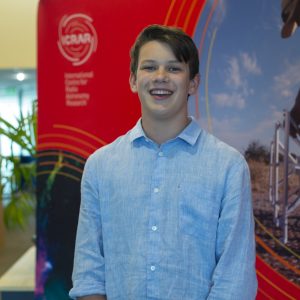“Not only is the Universe stranger than we think, it is stranger than we can think.”
― Werner Heisenberg
 My name is Patrick and I was ecstatic to be involved with the ICRAR work experience program lasting from the 15th of April to the 18th of April, 2019.
My name is Patrick and I was ecstatic to be involved with the ICRAR work experience program lasting from the 15th of April to the 18th of April, 2019.
Day 1 – 15/04/2019:
Today, we had the amazing opportunity to talk to a variety of studiers from the Curtin Campus of ICRAR, as well as participate in Journal Club. This was an amazing experience from everyone’s perspective, and we all thoroughly enjoyed it.
We talked to Clancy James, an astrophysicist – cross – particle physicist, who answered a lot of our questions about space and the nature of the expending universe, dark matter and energy, quantum mechanics, general relativity and much more. This 20 minute conversation opened more questions than answers, but certainly answered many burning questions that I had, and I thoroughly enjoyed the experience of talking with him. Following this, we entered Journal Club. This is a weekly event held by the ICRAR staff, to discuss recent astronomy based news. This week’s highlight focused mainly of the new (and first) photos of black holes ever captured. This was led by James Miller-Jones, who was extremely versed on this field. I asked him some questions afterward about some queries I had regarding black hole jet formations. This was followed by a lunch break, where I got to know my three other work-experiencers better, and got to use the tea and coffee machines. We then moved into more discussions with researchers from different backgrounds. First was Dr Nipanjana Patra, who taught us the value and benefits of transferrable skills, and showed us her journey in radio astronomy, and her most recent project, a precision radio telescope. Next was Ben, who studied dying black holes, which had recently stopped producing jets. According to his research, there are only 12 of these types of black holes documented in the whole universe! He showed us how he uses algorithms to assist his research and how and where different radio telescopes are applicable, such as GLEAM and ASKAP. Finally, to finish off the day, we talked to Arash, who showed us how he uses X-rays to predict the brightness of stars and extragalactic events by the day. He demonstrated how and why X-ray telescopes are designed how they are and what X-ray graphs and plots mean. We walked through the plotting of a star’s brightness and predicted how it will shine for the next 1000 days, which was a great way to end the day.
Day 2 – 16/04/2019
Day 2 was our 1st day at UWA. It started with a crash course in cosmology, where we learned about the basics of cosmology so that we were all on the same page when we were talking to students and researchers. We then moved into our first activity for the day, weighing a galaxy. This involved a multitude of concepts that we learned in the previous segment and learned new concepts altogether. Next we talked to an exchange student from Germany who talked to us about living in an overseas country while studying, and showed us her paper regarding dark matter and the movement of galaxies. We talked to some other students about simulations and how they use simulations to better understand the early universe and what it could have looked like. Lastly, we spoke with Nathan about what he does and how he predicts the formation and death of stars, black holes and other galactic and extragalactic events.
Day 3 – 17/04/2019
Today was back at Curtin and consisted with more interviews with students and researchers, including doing some coding and decoding of galaxies and how they shine over time with a researcher by the name of Cass. And later talked to Christine about the removal of ‘sources’ out of a picture. This allowed for less bright ‘sources’ to be recognised more easily and allowed for us to look back further in time. At lunch the staff and students talked about the pros and cons of Hass avocados vs Shepherd avocados, and after lunch we had an opportunity to look at data from black holes to determine whether it was moving or not, and other statistics about it.
Day 4 – 18/04/2019
On the last day of work experience, we were back at UWA. We talked to more students and researchers, but also got to indulge in a wicked morning tea to celebrate Easter and also look at some amazing telescopes. We had a chat to Tristan, who studies the density of galaxies based on how dense their respective galaxy clusters are, Ahmed who talked about how interacting (colliding) galaxies change how hydrogen gas is distributed within them due to these collisions, Omima who worked in simulation, and showed us how space ‘dust’ effects how galaxies form and how it effects the production of molecular hydrogen (H2) and finally Ryan, who works on data intensive astronomy and demonstrated how they will manage the magnitude of data that the SKA produces when it gets up and running. Later in the day, we had a look at the amazing Spirit Telescope and watched it operate in all of its glory.
And that was the end of work experience. I certainly got so much out of the experience and I would highly encourage anyone and everyone to take on this wonderful experience